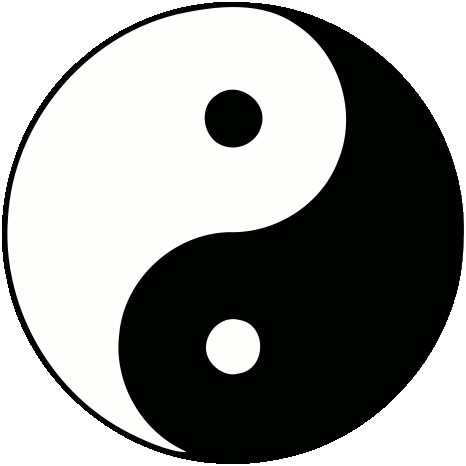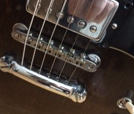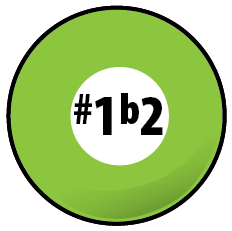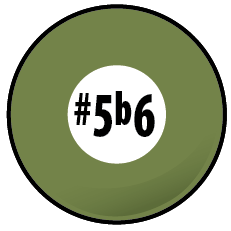~ #9 ~ V 7#9 ~ a minor 10th = # 9
|
| Author's note. The amount of minor 10th theory ideas in the following discussions ? Near zero. While the interval is common in chord voicings, root up a minor 10th, its theory, and at least here in UYM / EMG, is near all presented as a minor 3rd / blue 3rd. Please click over to explore their discussions down an octave :) |
In a nutshell. The V7#9 chord. If there are certain chords, that when confidentially sounded can change the mood of the thing with just one strum, then this V7#9 is surely one such chord; on a piano, guitar, horn section all the same really, a clarion call to upcoming testimony in the blue's hue. So if your a folk player and starting to hear this colortone / pitch / chord in your musics, you're probably leaning to the blues. Or, if you are a blues artist rocker, you probably already know of this color and looking to make the big roar. Country and pop stylist? You're adding in blues and heavier rock. |
|
And for jazz leaners? Since the blues is a historical root of all jazz, V7#9, as a chord color, is an essential puzzle piece in a couple of key ways. First, jazz players tend to play a lot of 12 bar blues. Second, in leaning blues with songs written in a minor key, 'V7#9' works perfect for a real clear 'find the top' Five chord for setting up the next chorus and One / minor. 'G7#9' to 'C' minor And one chord voicing to rule them all? For guitar there is :) Movable ? Well yes ! Work well with whammy bar ? Beyond question. Detuned OK ? Yep, detuned with deep creds. Tested by all the pro's ... ? U bet. Got ur interest ? Right on and read on :) |
|
So why sharp Nine? We're simply raising ( sharping ) our diatonic 9th by half step. Indeed our current pitch under consideration here could also be viewed as a minor tenth, so up a minor third, plus one octave up from our chosen root pitch. Scan the next chart and locate the #9 / -10th from within the pitches of 'C' major scale and the reconfiguration of its pitches into its arpeggio '1 ~ 15' arpeggio degrees. Example 1. |
|
Theory names. Sharp 9th, minor tenth. Ye old enharmonic equivalents my friends? Tis is indeed. One pitch with two names, which one we use determined by how they are triangulated into the theory. Does it matter, what's in a name ? U decide :) To some players yes, keeping things straight eases the transfer of the coolness, which can be a giant help on the bandstand, in the studio and beyond. Knowing theory is one thing, hearing and singing the theory can be another. And in that we all gets to be humbled, so sing along, then alone, and maybe find these pitches 'a cappella.' Example 1a. |
|
 |
Sharp Nine in the harmony. Our sharp Nine colortone associates with dominant / Five chord harmony. In all of the American sounds with a blues influence, there's really only a couple of chord voicings that sum up this #9 color. And of these few, one lives at the center of the sharp Nine universe. |
Examine the pitches and a potentially essential voicing for V7#9 and its color. In the following chart we organically locate, extract and evolve the pitches of our diatonic G9 into G7#9, from the pitches of C major. Example 2. |
scale degrees |
1 |
2 |
3 |
4 |
5 |
6 |
7 |
8 |
. |
C major pitches |
C |
D |
E |
F |
G |
A |
B |
C |
. |
arpeggio degrees |
1 |
3 |
5 |
7 |
9 |
11 |
13 |
15 |
. |
C major arpeggio |
C |
E |
G |
B |
D |
F |
A |
C |
. |
arpeggio degrees |
. |
. |
1 |
3 |
5 |
7 |
9 |
11 |
13 |
V7 arpeggio pitches |
. |
. |
G |
B |
D |
F |
A |
C |
E |
arpeggio degrees |
. |
. |
1 |
3 |
5 |
7 |
# 9 |
. |
. |
G 7 #9 pitches |
. |
. |
G |
B |
D |
F |
A# (Bb) |
. |
. |
 |
The 'Jimi" chord. Hendrix loved this chord. 'SRV' too. The last idea a mix of 'My Sharona' rhythms ( sort of ) with the Jimi chord :) Monster monster guitar ride in "My Sharona" but no #9 color to speak of. The lick here is a basic practice format. Anyway, this is the shape lads. A root position chord named by its lowest pitch, totally movable up and down the neck. The root 'G' is common in blues and rock as we get the low 6th string / third fret, for added effects. Those in the know will run this down to an 'E7#9', more to the Jimi / SRV position. Then we get the low open E string ring, plus the 'blues and butter' shape open position and at the 12th fret. This chord, and this scale shape in the key of 'E', have shook a lot of rooms and filled dancefloors over the decades. What's not to love :) |
|
The chord that we generally know as V7#9 is as distinct a color as we might ever find. It has created some very memorable moments in our blues and rock libraries. This chord could very well contain the greatest degree of the essential 'blues rub.' And while the #9 is an essential Americana musical spice, its theory is unique in that the prominent melody notes it often supports are not found in harmony. Thus the rub? Thus the rub. |
Cadential motions. The V7#9 color makes for some pretty serious and rather definite cadential motions in both the major and minor tonalities. Using the core voicing from the last example, Five to One in major, then minor and then the blues in 'C.' Example 2a. |
 |
Additional V7#9 voicings. While the above voicing is probably the strongest and easiest of the voicings to get under our fingers, of course there are others available to the modern guitarist. In working with a bass player the voicings do evolve. With bass and keys, yet even a further evolution of choices as we create inversions of our chords to stay out of one another's way. |
Author's note. So oftentimes as the rhythm section fills up with additional players, the number of pitches in our chords are reduced. This is simply a matter of deciding what the sound of the group is to be. In the styles were chords use more colortones, as say in pop, jazz and beyond, guitarists often reduce their pitches to include Three and Seven to determine chord quality, and then add a colortone, leaving the heavy lifting of roots and 5th's to the bass and piano players. |
Root position chords. Many of the new chords we learn simply start out as chunks of harmony while we get them solidly under our fingers, and often provide us with a 'shape' that just might help us locate a nice new melody or arpeggio idea. And working out chord melodies oftentimes makes for needing new chords too. And yet, in one sense it is all about what our ears tell us is correct. Please examine the following V7#9 shapes organized by our bass strings ( 6 5 4 etc. ), see if there's something that strikes a chord :) Example 3. |
 |
The one in the middle. There's that shape again, beloved by so many. Bang off an open low 'E' and find this shape at the 6th fret, making 'E'7#9, then a 'G' chord then 'A', repeat the lick a few times :) |
Examine the #9 rub. The V7#9 chord has a major third in its supporting triad and a minor third (the #9) above as the colortone. The tension in the chord is further advanced with the dominant chord's own charter member of a two pitch tritone interval within. So all combined, quite a bristling little chunk of harmony. Do examine the rubbing pitches G7#9. Example 3a. |
arpeggio degree |
root |
3 |
5 |
7 |
#9 |
interval tension |
. |
B to F / tritone
|
. |
||
arpeggio pitches |
G |
B |
D |
F |
A# |
interval tension |
. |
B to A# / major 7th
|
|||
arpeggio pitches |
G |
B |
D |
F |
A# |
 |
A perfect storm of dissonance. Kinda an amazing thing of so much dissonance packed into four pitches. And if that's not enough, generally speaking, our core shape is quite a conquerable fingering with patience. |
V7#9 inversions. When this color starts to soften up by being passed through our various melodic / harmonic filters, some pretty amazing things can happen. Here are a few additional V7#9 voicings. These are tricky for guitarists in that we need both a major third and the minor 3rd / #9 pitch in the voicing. Plus the blue 7th of course, to give it the 'tritone within' dominant chord essence. Example 4. |
 |
Jazz chords mostly ? Yep. And passing chords too, that can end up moving in minor 3rd patterns associated with the diminished colors. |
Melodic / harmonic filter. In working with these colors, in which their tonal gravity and directional predictability are reduced, we can easily slide them about to create new and interesting resolutions. In this next idea, we filter the first chord by the interval of a minor third and resolve. Example 5. |
 |
Hear the ascending motion of minor 3rd's? We borrow the idea from the perfect symmetry of the fully diminished 7th chord. This is a fairly common occurrence in modern leaning jazz. Easily redundant, one trick is to split up the minor third into its two parts and find some nuance with the pitches as the chords move to disrupt the parallel motion / continuity of the lick, if so desired. Here's the above idea worked as a whole tone / halftone straight up resolving to C major then minor. Example 5a. |
 |
Any music in this for you? These are academic ideas pure and simple. Music? Ah ... the theory generates possibilities and the artist polishes into art. |
"Learn the rules like a pro so you can break them like an artist." |
wiki ~ Pablo Picasso |
~ stgc / halfway to chroma-zone ~ |
A V7 altered chord before each written chord. In this next idea we simply place an altered dominant chord before each of the chord changes in a song. Again, this is a jazz thing. And even then it's somewhat rare except in performances where the audience is expecting this style of modernistic art, i.e., concert level performances, leaning towards the atonal side of 'round midnight.' Cadentially, Two / Five / One in C major. Example 6. |
 |
That's Two / Five / One in C major? In theory, yes it sure is. And even in a rather roundabout way of getting there, it got there. With modern players, even the resolution chord is potentially negotiable. Eventually, some of the advancing jazz art becomes about disguising the direction, most easily done with chromatic motion. |
Artists just gradually evolve the colors and knit them together in interesting ways. Eventually it devolves further towards and into chromaticism. Almost like the evolution of recognizable landscape painting into the abstract expressionism of the 1950's. |
|
All chords take on a V7 altered hue. In today's modern settings, advancing jazz players have further blurred the sense of tonality by increasing the tempos and recreating the harmonic motion through chord substitution and colortones. One core of this modernity is created by simply making each chord in a progression an altered dominant chord type. |
This approach is a throwback to the 1920's era where some popular songs where created with cycles of dominant chords. Songs such as "Sweet Georgia Brown" from 1925, illustrates this dominant chord, back pedaling approach. So in modern times, while we follow some of the same patterns, we also have condensed and altered the harmony to nearly beyond recognition. The music takes on what I refer to as the 'chromatic blur.' |
A jazz influence. So as artists, we each choose the extent of how much of this, and other forms of chromaticism, we bring into our sounds. And to what degree we do this might be the determining factor in regards to the extent of the 'jazz influence' in our artwork. Here in Essentials, we're simply tasked with exploring the resource of 12 pitches, coming along after and analyzing the art, to unravel its puzzles and learning about its secrets. |
Seventy five years of evolution in three measures. This next idea is in two parts. In the first we simply backpedal dominant chords by perfect fourths, creating the cool yet fairly common Three / Six / Two / Five / One chord progression in C major, reminiscent of harmonic motion of the 1920's or so. Example 7. |
 |
Here is the same chord progression modernized to include the evolution of the harmony of what we might hear in today's modern jazz / 12 / chromaticized tone performance format. Example 7a. |
 |
Say what ? Cool huh ? Ever imagine this ? Just kidding. For even sans (without) the root pitch motion of example 7a, are you catching the sense of tonal gravity and the impending resolution in the line? Using two chords for one of allows us to continuously shift the color tones. The minor third leap on the G7 chord of bar two, 3rd and 4th beats helps the impending sense of resolution. Yet, the final polytonal chord just doesn't quite stabilize and settle things. |
So while the forward motion towards a resolution is still there, it's just WAY different, or evolved, from its organic source as in example 7. Compare the two examples again please. As artists, we examine a spectrum of resources, understand their evolution from what is in a sense our universal core, be the artist and make the art happen :) These evolutions are also a challenge to master, an increasing level of difficulty conquered through searching and knowing the theory. We then may try to gig the art, see what shakes loose under the lights. |
Review. The sharp Nine / minor Ten is at its theory core a minor 3rd up from our root pitch then transposed up an additional octave. While the minor Ten is almost always theoretically viewed in this book as the blue or minor third, piano players oftentimes rely on this interval to stabilize their chord voicings. |
In American music, the #9 coloring is most associated with blues and jazz. Hijacked by the rockers, the V7#9 chord has found a memorable home in some essential classic rock songs. And while it is a bit on the gritty side of things, it does make for a smashing chord to end memorable testimony by players of any persuasion. |
"A problem is a chance for you to do your best." |
wiki ~ Duke Ellington ~ |
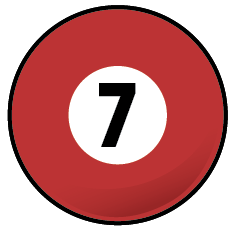 |
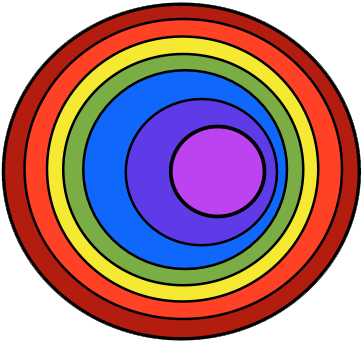 |
|||||||||||
 |
 |
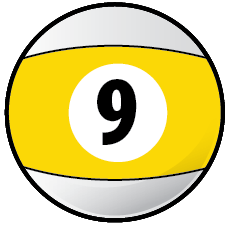 |
 |
 |
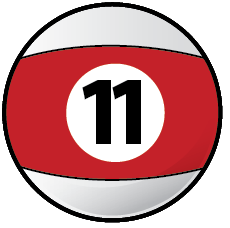 |
 |
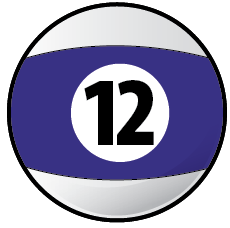 |
 |
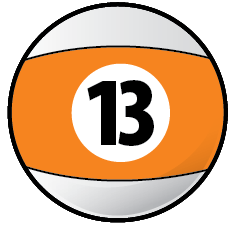 |
 |
 |
 |
References. References for this page's information comes from school, books and the bandstand and made way easier by the folks along the way. |
Find a mentor / e-book / academia Alaska. Always good to have a mentor when learning about things new to us. And with music and its magics, nice to have a friend or two ask questions and collaborate with. Seek and ye shall find. Local high schools, libraries, friends and family, musicians in your home town ... just ask around, someone will know someone who knows someone about music and can help you with your studies in the musical arts. |
|
Always keep in mind that all along life's journey there will be folks to help us and also folks we can help ... for we are not in this endeavor alone :) The now ancient natural truth is that we each are responsible for our own education. Positive answer this always 'to live by' question; 'who is responsible for your education ... ? |
Intensive tutoring. Luckily for musical artists like us, the learning dip of the 'covid years' can vanish quickly with intensive tutoring. For all disciplines; including all the sciences and the 'hands on' trade schools, that with tutoring, learning blossoms to 'catch us up.' In music ? The 'theory' of making musical art is built with just the 12 unique pitches, so easy to master with mentorship. And in 'practice ?' Luckily old school, the foundation that 'all responsibility for self betterment is ours alone.' Which in music, and same for all the arts, means to do what we really love to do ... to make music :) |
 |
"These books, and your capacity to understand them, are just the same in all places. Always bear in mind that your own resolution to succeed, is more important than any other one thing." |
|
Academia references of Alaska. And when you need university level answers to your questions and musings, and especially if you are considering a career in music and looking to continue your formal studies, begin to e-reach out to the Alaska University Music Campus communities and begin a dialogue with some of Alaska's finest resident maestros ! |
|
~ |
